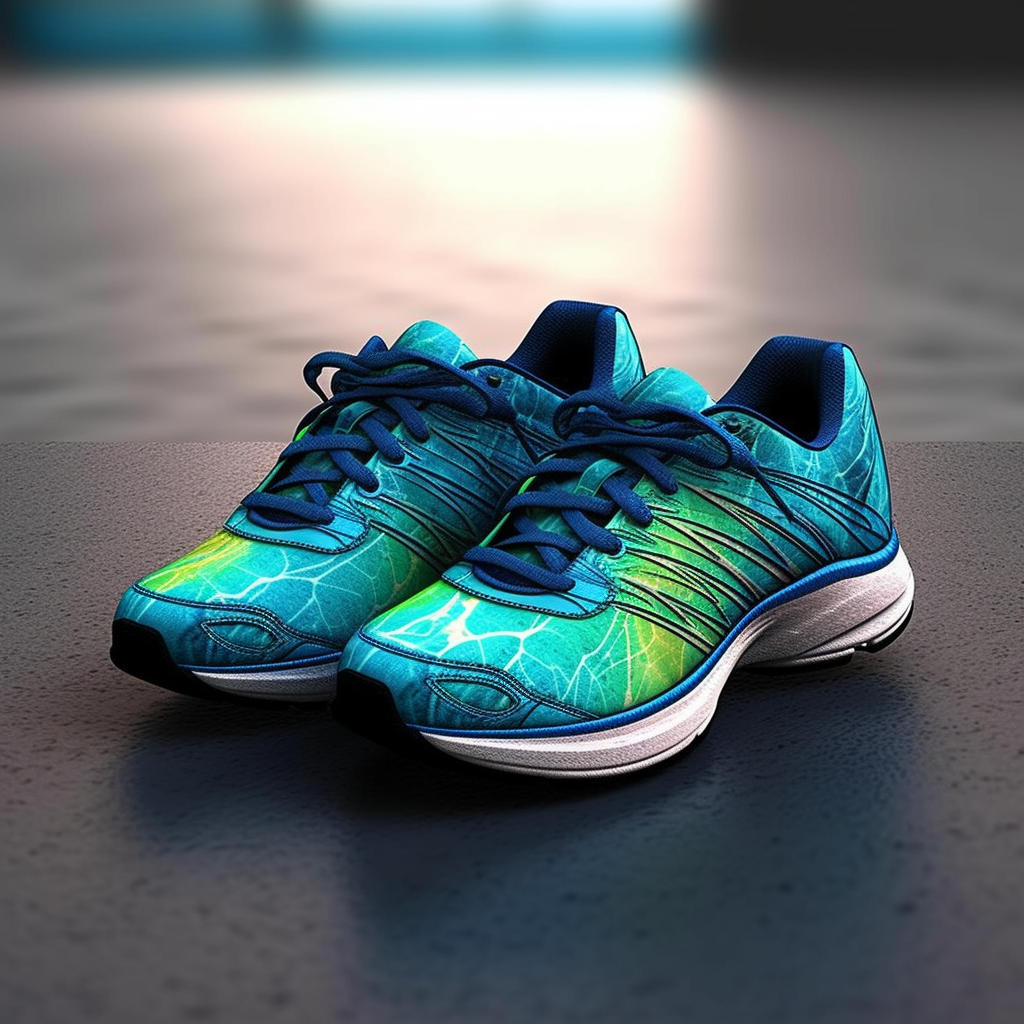The world of running shoes has evolved significantly, and one question that often arises is whether women can wear men’s running shoes. This article aims to explore this topic and shed light on the potential benefits and considerations involved.
8 Practical Tips for Women Considering Men’s Running Shoes
When it comes to finding the perfect pair of running shoes, women often face a unique challenge.
Many women prefer the fit and style of men’s running shoes, as they provide a wider range of options and better support. However, navigating the world of men’s running shoes can be overwhelming.
That’s why we’ve compiled this comprehensive guide to help women make informed decisions when considering men’s running shoes.
Whether you’re an experienced runner or just starting out, these practical tips will ensure you find the ideal pair of men’s running shoes that meet your needs.
1. Understand the Differences
Before diving into the specifics, it’s important to understand the key differences between men’s and women’s running shoes.
Men’s shoes are generally wider and have a broader heel and toe box.
Men’s shoes often offer more stability and cushioning compared to women’s shoes.
By recognizing these differences, you can make better-informed decisions when exploring men’s running shoe options.
2. Determine Your Foot Type
Knowing your foot type is essential for finding comfortable running shoes. There are three main foot types: neutral, pronated, and supinated.
Understanding your foot type will help you choose the right shoes with appropriate support and cushioning.
Visit a specialized running store or consult with a podiatrist to determine your foot type accurately.
3. Get Properly Fitted
Proper fitting is crucial when selecting running shoes. Visit a reputable running store and get your feet measured by a professional.
They will assess your foot length, width, and arch height to find the perfect fit for you.
Don’t be tempted to buy shoes solely based on the size you usually wear in women’s shoes; sizing can vary between brands and models.
4. Consider Shoe Width
One common issue women face when considering men’s running shoes is finding the right width. Men’s shoes tend to be wider, so if you have narrow feet, opt for narrower models or consider insoles and lacing techniques to achieve a snug fit. Conversely, if you have wider feet, men’s shoes might be a better match for you.
5. Test for Comfort and Flexibility
Always try on different pairs of running shoes to assess their comfort and flexibility.
Walk or jog around the store to get a feel for the shoes and how they support your feet.
Pay attention to any discomfort, pressure points, or lack of flexibility.
Remember, comfort is paramount to prevent injuries and enjoy your running sessions to the fullest.
6. Consider Arch Support
Women often have different arch types compared to men.
If you have high arches, look for shoes that offer ample arch support to prevent excessive pronation.
On the other hand, if you have flat feet or low arches, seek shoes with stability features to enhance your gait.
A knowledgeable store associate can guide you towards suitable options.
7. Analyze Cushioning and Shock Absorption
Cushioning and shock absorption play a vital role in running shoes, especially for those logging longer distances.
Men’s shoes generally offer more cushioning and shock absorption than women’s shoes.
If you prefer additional cushioning or require enhanced shock absorption due to joint issues, men’s running shoes might be the right choice for you.
8. Consider Pronation Control
Pronation, the inward rolling of the foot during the gait cycle, affects how your foot absorbs shock.
Understanding your pronation type is crucial for finding the right running shoes.
Men’s shoes often provide better pronation control due to their wider design and added stability features.
If you overpronate or underpronate, men’s shoes might be a suitable option to promote a more natural stride.

Debunking the Myth: Women Wearing Men’s Running Shoes
In the quest for the perfect fit, some women may consider wearing men’s running shoes. Breaking down the gender barrier in sports, many women have found that men’s running shoes can offer unique benefits. These shoes often have wider size ranges and provide a different cushioning and stability experience.
Challenges and Considerations
While women wearing men’s running shoes can be a viable option, there are some challenges and considerations to keep in mind.
Sizing disparities may require adjustments, and differences in foot biomechanics between men and women can impact the overall fit and support.
It’s essential to carefully evaluate the potential impact on performance and the risk of injuries.
Can Women Wear Men’s ASICS Running Shoes?
ASICS running shoes are popular among both men and women.
Many women find that men’s ASICS running shoes offer a comfortable and supportive fit.
However, it’s crucial to consider the specific features and design aspects of these shoes to determine their suitability for women.
What Size Would A Woman Wear in Men’s Shoes?
Determining the correct size when transitioning from women’s to men’s running shoes can be confusing.
A general rule of thumb is to go down 1.5 to 2 sizes from your women’s shoe size. However, it’s always best to try on different sizes and consult the size conversion charts provided by the shoe manufacturer for more accurate guidance.
Are Men’s Shoes Wider Than Ladies?
In general, men’s shoes tend to have a wider fit compared to women’s shoes.
This difference in width is due to the physiological variations between men and women.
Women considering men’s running shoes should take this into account to ensure a proper fit without compromising comfort and stability.
What Is the Difference Between Men’s and Women’s Running Shoes?
Men’s and women’s running shoes can vary in several aspects.
Women’s shoes often have a narrower heel and a wider forefoot to accommodate the typical shape of women’s feet.
Additionally, the midsole cushioning and support may differ to address the specific needs of each gender.
Insights from Athletes and Professionals
Various perspectives exist regarding women wearing men’s running shoes.
Female athletes have shared their experiences, highlighting the benefits they have experienced. Footwear experts and podiatrists offer valuable insights into the potential impact on performance and foot health.
The running community holds diverse opinions, with some embracing the idea and others advocating for gender-specific footwear.
Women Thriving in Men’s Running Shoes
Several successful female athletes have achieved remarkable performance wearing men’s running shoes.
Their stories showcase the positive outcomes and experiences they have had, emphasizing the importance of finding the right fit and comfort for individual needs.
The Role of Personal Preference and Individual Fit
Choosing the right running shoes is a personal decision that should prioritize individual needs and preferences.
Comfort and confidence play significant roles in performance, and finding the perfect fit goes beyond gender-specific labels. It’s crucial to consider factors such as cushioning, support, and overall feel to make an informed choice.
Addressing Potential Drawbacks
While women wearing men’s running shoes can offer advantages, there are potential drawbacks to be aware of.
Social implications and gender stereotypes may arise, and style and aesthetic considerations may differ between men’s and women’s shoes.
Additionally, long-term effects on foot health should be taken into account.
Practical Tips for Women Considering Men’s Running Shoes
If women are considering wearing men’s running shoes, there are practical tips to keep in mind.
Evaluating individual foot characteristics, seeking professional fitting advice, and exploring hybrid options and unisex designs can help in finding the right pair of shoes that meet specific needs and preferences.
Women’s Running Shoes: Innovations and Progress
The running industry continues to make advancements in women-specific running shoe technology.
Breaking gender norms, brands are focusing on delivering high-performance footwear that caters to the unique biomechanics and preferences of female runners.
The future holds promising possibilities for women’s running shoes.

Frequently Asked Questions
Can wearing men’s running shoes affect my performance negatively?
Wearing men’s running shoes does not necessarily guarantee negative effects on performance. However, it’s essential to find a proper fit and consider the specific features and support needed for optimal performance.
Personal comfort and individual preferences play a crucial role in determining the impact on performance.
Are there specific brands that offer better options for women in men’s running shoes?
Various brands offer men’s running shoes that cater to the needs of women.
It’s recommended to explore different brands, try on different models, and consider the features and fit that align with individual preferences.
How do I determine the right size in men’s running shoes?
When transitioning to men’s running shoes, it’s recommended to go down 1.5 to 2 sizes from your women’s shoe size. However, it’s always best to try on different sizes and consult the size conversion charts provided by the shoe manufacturer for more accurate guidance.
Are men’s ASICS running shoes suitable for women?
Many women find men’s ASICS running shoes to be suitable for their needs.
These shoes often provide a comfortable and supportive fit. It’s important to consider the specific features and design aspects of the shoes to determine their suitability for your individual requirements.
Are men’s running shoes wider than women’s?
In general, men’s running shoes tend to have a wider fit compared to women’s shoes.
This difference in width is due to physiological variations between men and women.
Women considering men’s running shoes should take this into account to ensure a proper fit without compromising comfort and stability.
What is the difference between men’s and women’s running shoes?
Men’s and women’s running shoes can differ in various aspects, including size, shape, cushioning, and support.
Women’s shoes often have a narrower heel and a wider forefoot to accommodate the typical shape of women’s feet. Additionally, the midsole cushioning and support may vary to address the specific needs of each gender.
Please note that the content provided above is a general overview, and it’s recommended to consult with experts and professionals in the field of running shoe fitting for personalized advice and guidance.


Recent Comments